The best exercises for shoulders
Eight of the best exercises for shoulders to build strength and muscle

The best exercises for shoulders can help build strength and muscle, making everyday tasks easier, whether that’s washing your hair, passing food across the table or lifting a heavy shopping bag.
Resistance training, either with free weights or the best adjustable dumbbells, is a good way to develop strong shoulders, but you can also do bodyweight workouts that are just as effective.
We spoke with Mitch Raynsford, a qualified strength and conditioning coach, to get some tips on the best exercises for developing strong shoulders.
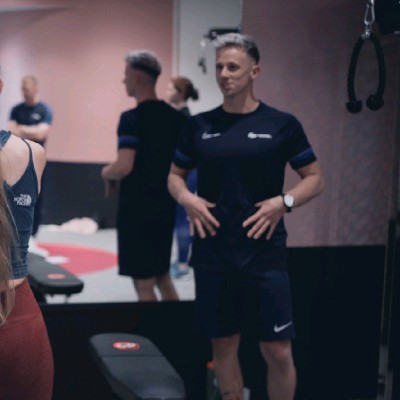
Mitch Raynsford is currently the strength and conditioning lead at P3RFORM. An accredited coach with a BSc and MSc in sports physiology, he works with top-flight athletes and professional sporting associations across the UK.
Military press
A staple in any strength-building program for the shoulders, using the barbell removes the instability that comes with dumbbell training to allow the focus purely on overhead pressing capacity.
Keeping the elbows flexed at 45 degrees ensures you hit the anterior (front) and medial (side) deltoids (shoulders) while keeping the movement safe for the shoulder joint.
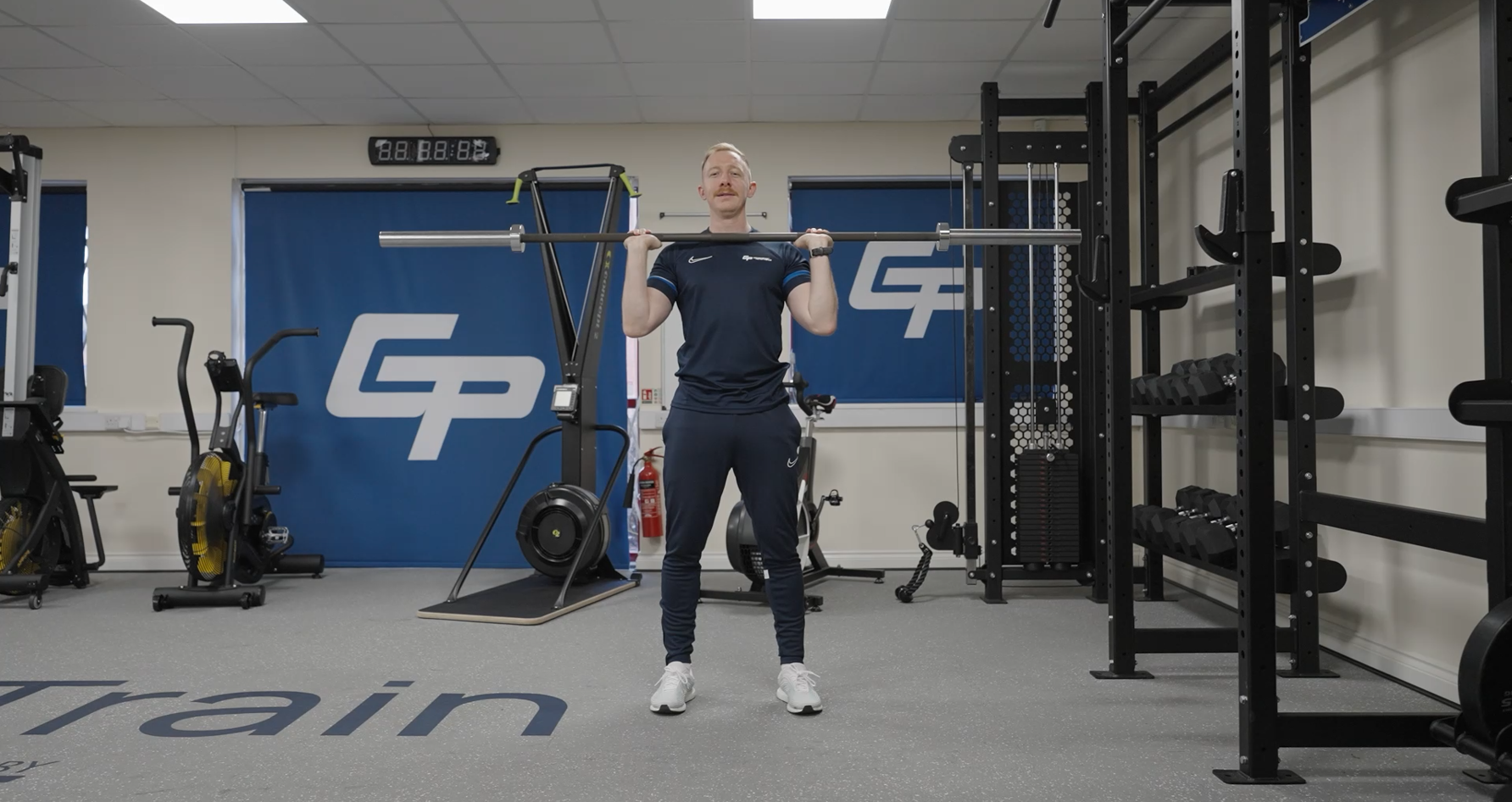
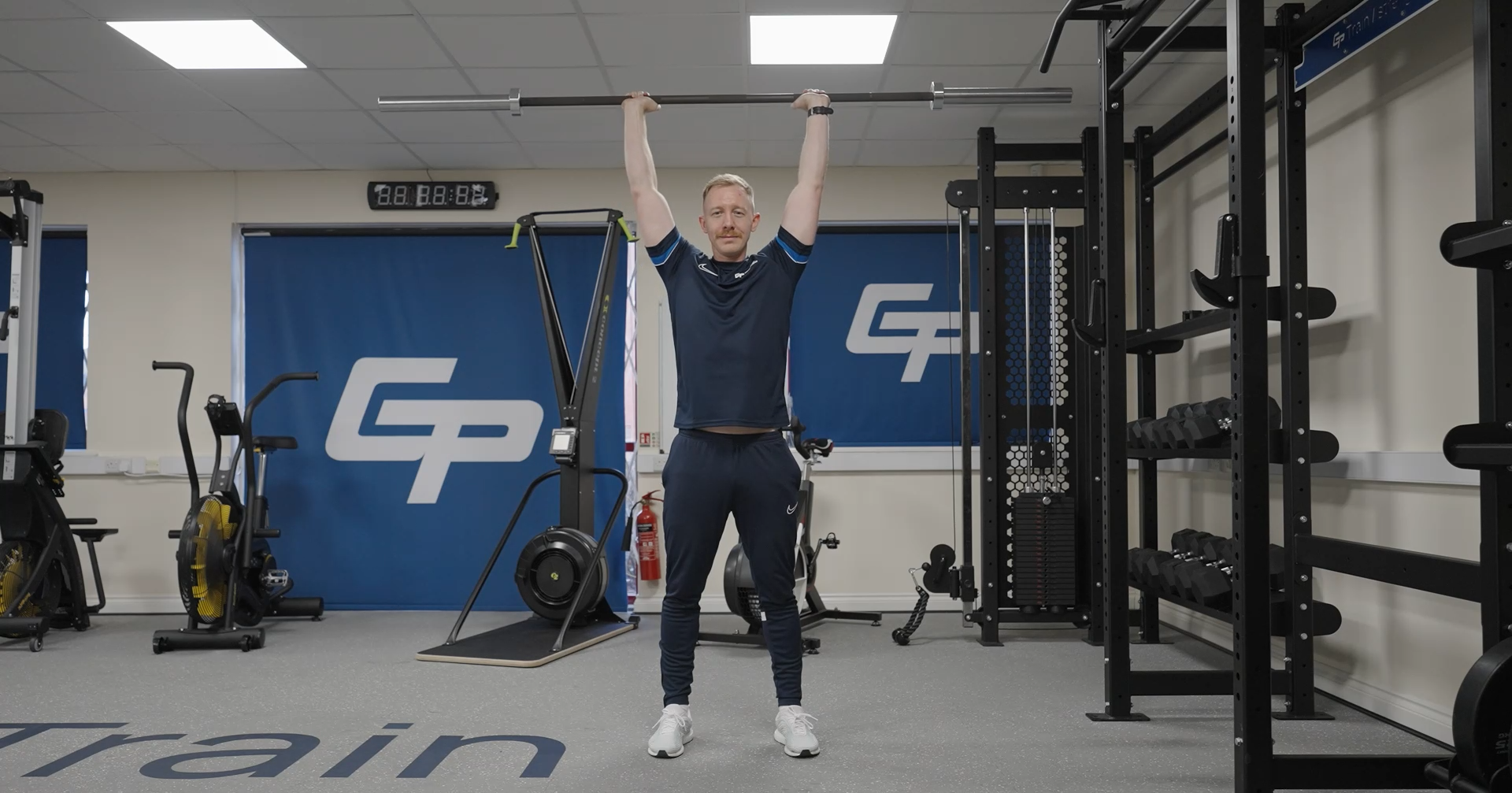
Sets: 2 - 4 Reps: 10 - 12
Instructions:
1. Start standing with a barbell across your chest, your feet shoulder-width apart and elbows flexed in front at a 45-degree angle.
2. Keeping your knees soft and core engaged, take a deep breath in, exhale, and press the barbell directly overhead so that your wrists stop directly over your shoulders.
3. Reverse the movement and follow the same path to return back to your starting position.
Dumbbell overhead press
This move is similar to the military press, however, this time your shoulders must control the dumbbells independently, which means your weaker side can’t hide. This exercise engages your stabilizing muscles more to support sound movement that will carry over to the barbell press and raise the ceiling you’re able to achieve.
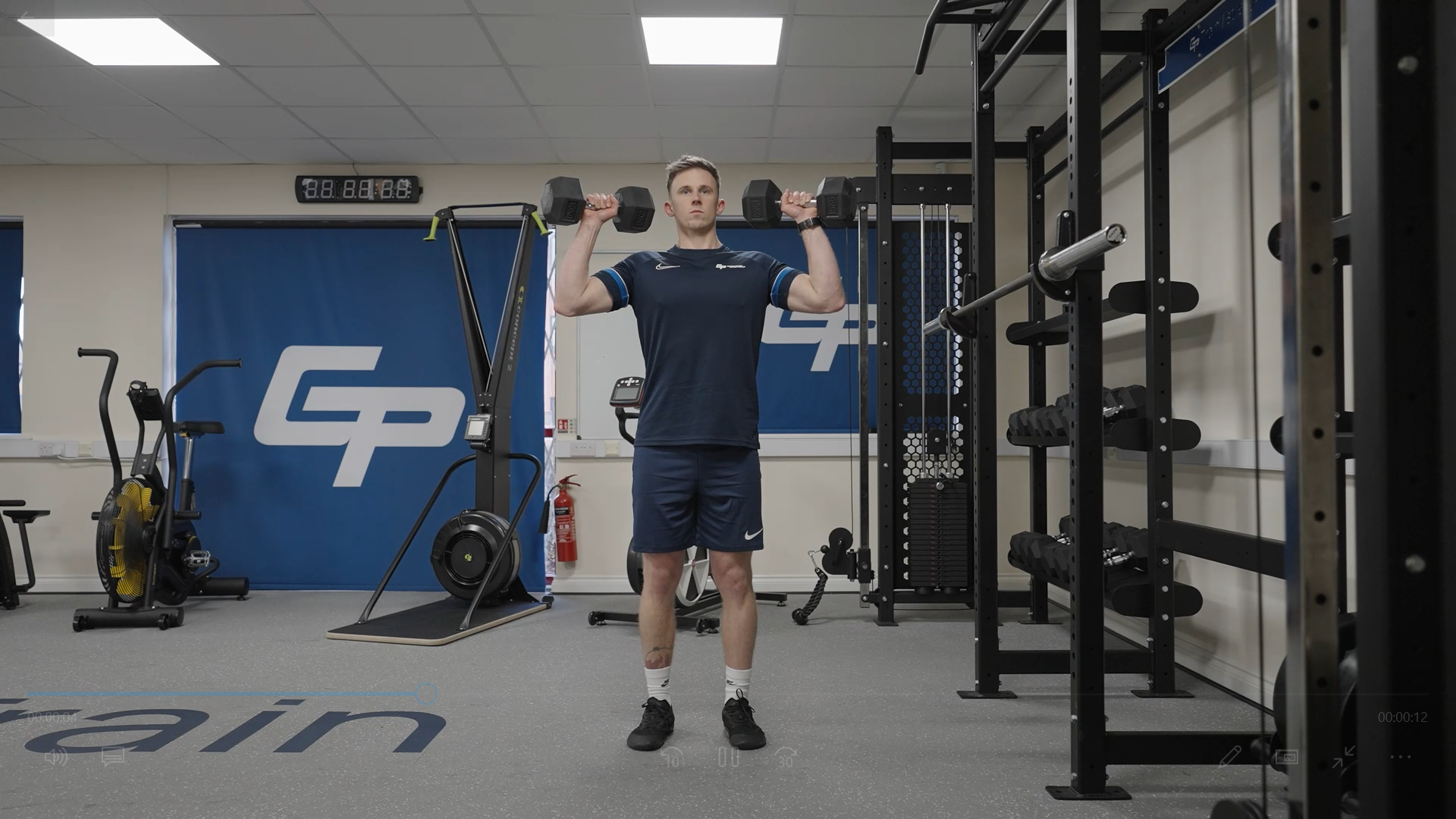
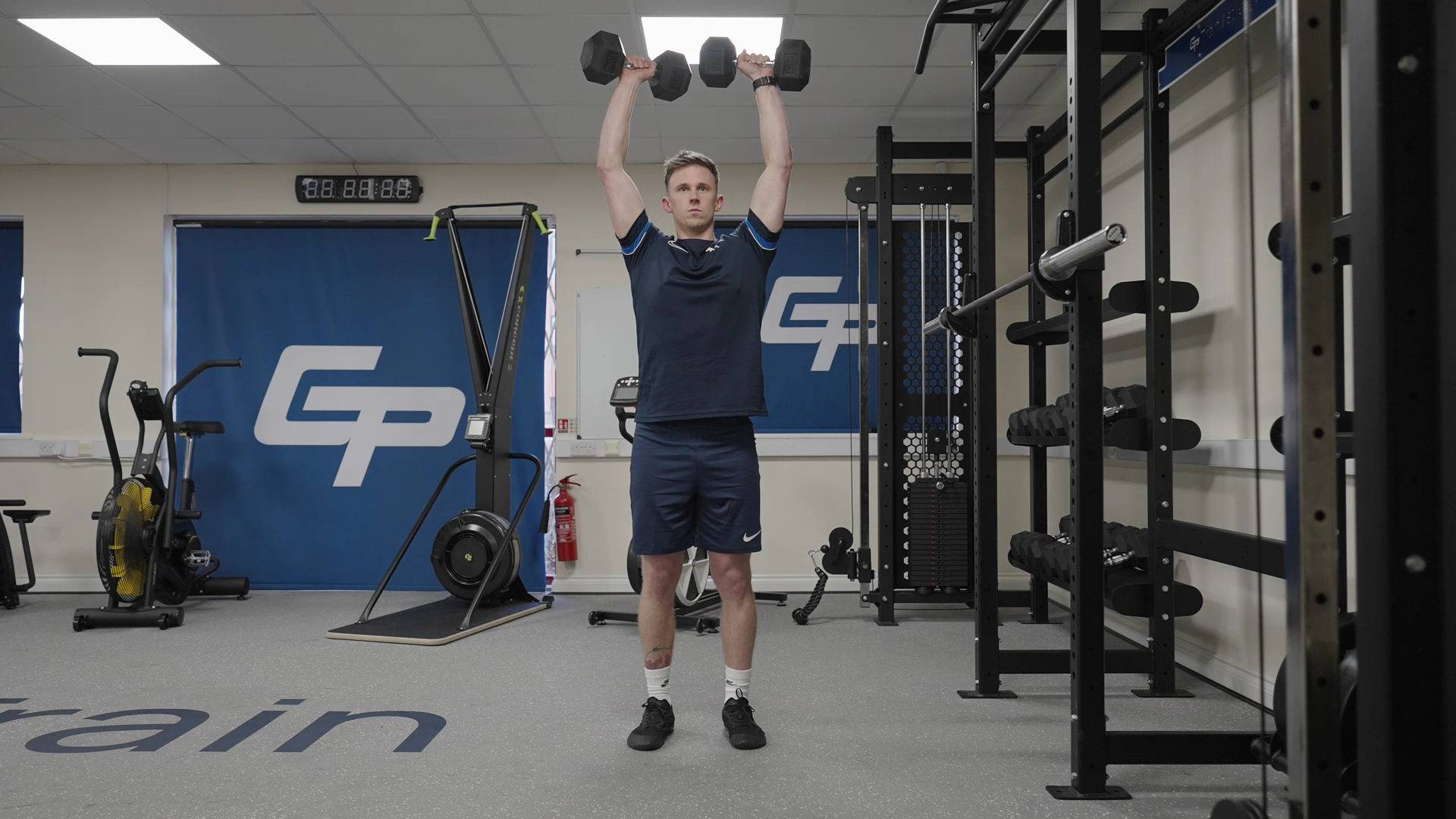
Sets: 2 - 4 Reps: 10 - 12
Instructions:
1. Start the movement standing with a dumbbell in each hand, and your feet shoulder-width apart.
2. Keeping your knees soft and core engaged, push the dumbbells so that they are shoulder height just outside of the shoulders, with palms facing 45-degrees and elbows pointing down.
3. Inhale, engage your core and press the dumbbells directly overhead so that your wrists stop directly over your shoulders.
4. Reverse the movement and follow the same path to return back to your starting position.
Half-kneeling single-arm dumbbell press
The half-kneeling single-arm press is a challenge for shoulder stability and core control. The core must be braced effectively to ensure the torso does not lean as you press overhead, which is key to sport performance and everyday health.
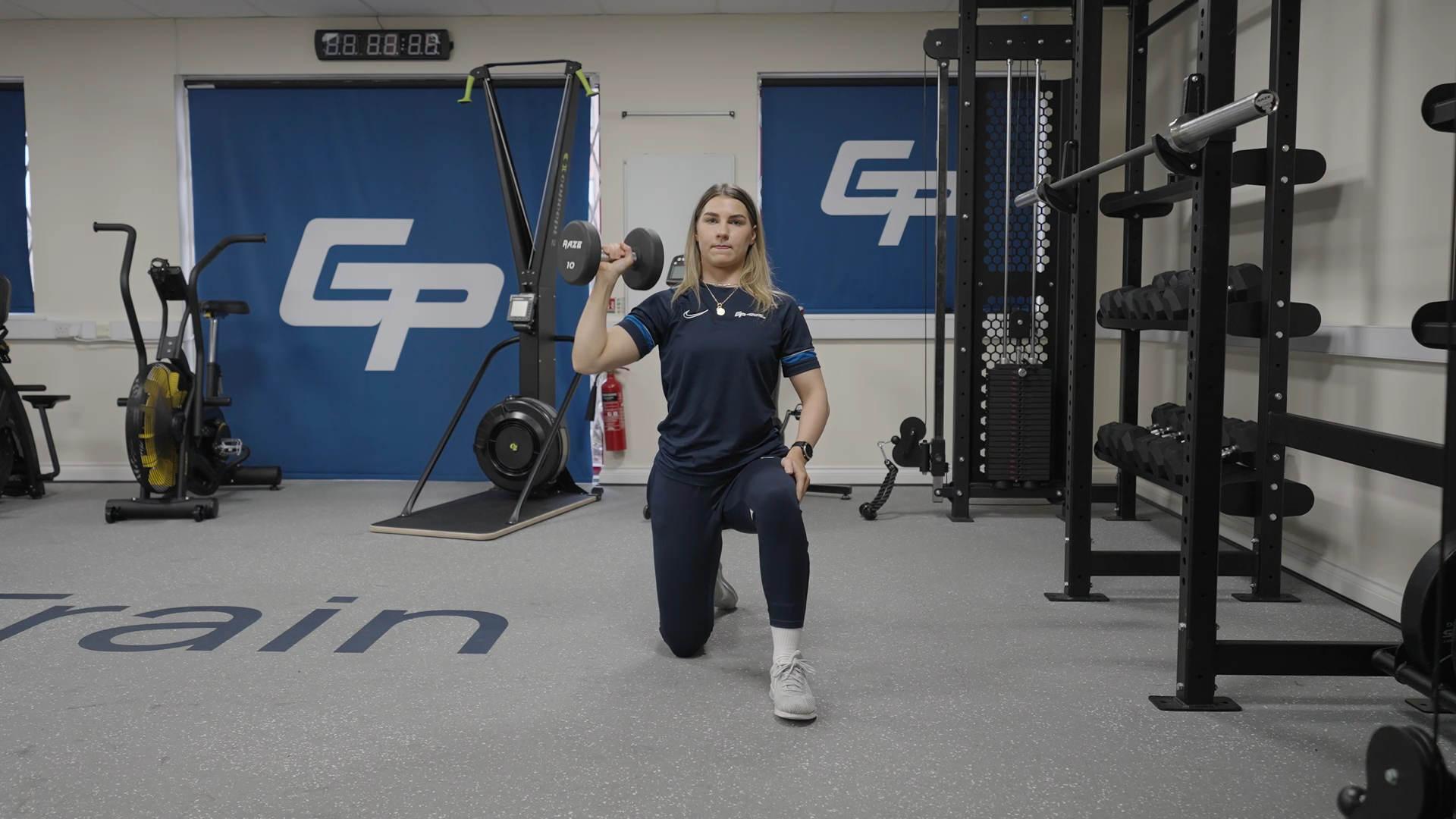
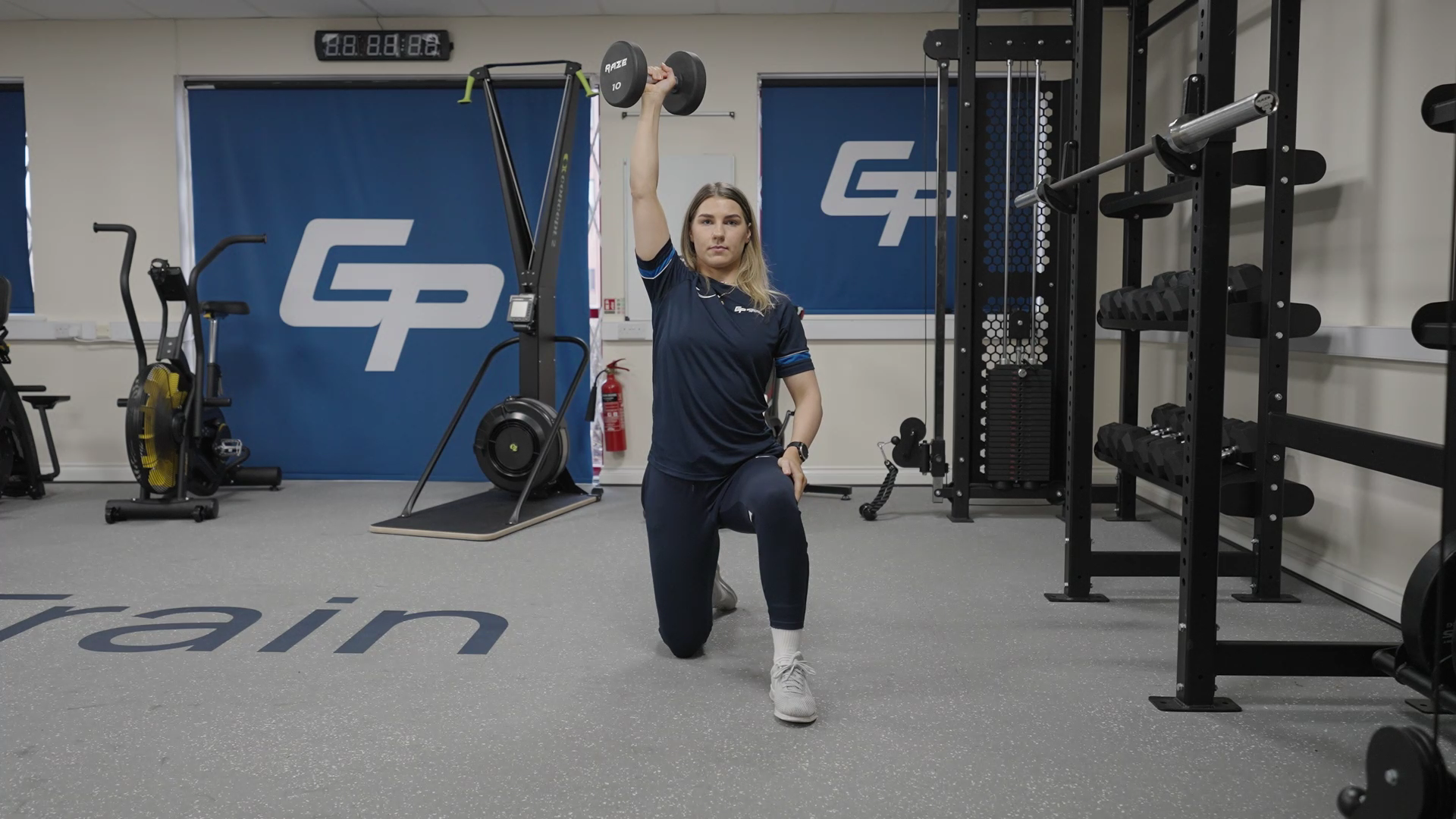
Sets: 2 - 4 Reps: 10 - 12
Instructions:
1. Start the movement in a half-kneeling position. Pick up the dumbbell in the opposite arm to the knee that is out.
2. Ensure the dumbbell is shoulder height with palms facing forward at 45-degrees and elbows pointing down.
3. Inhale, engage your core and on your exhale press the dumbbell directly overhead so that your wrist stops directly over your shoulders.
4. Pause at the top and then reverse the movement to return back to the starting position.
Face pulls
Face Pulls engage the posterior (rear) deltoids of the shoulders, which are often neglected by other shoulder exercises. Supplementing your training with this move is key for well-rounded shoulders and general joint health. This exercise can also prevent muscular imbalance.
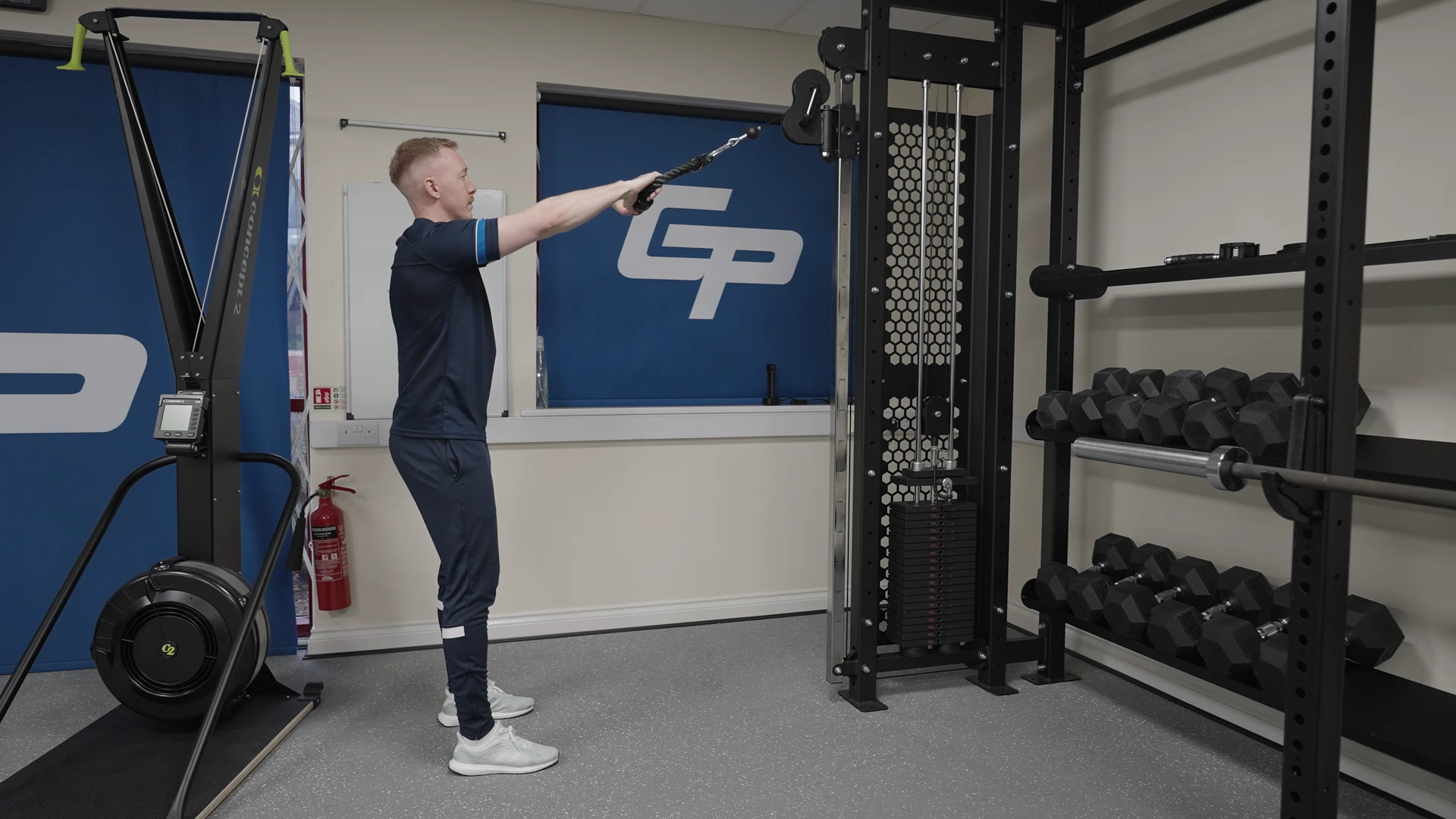
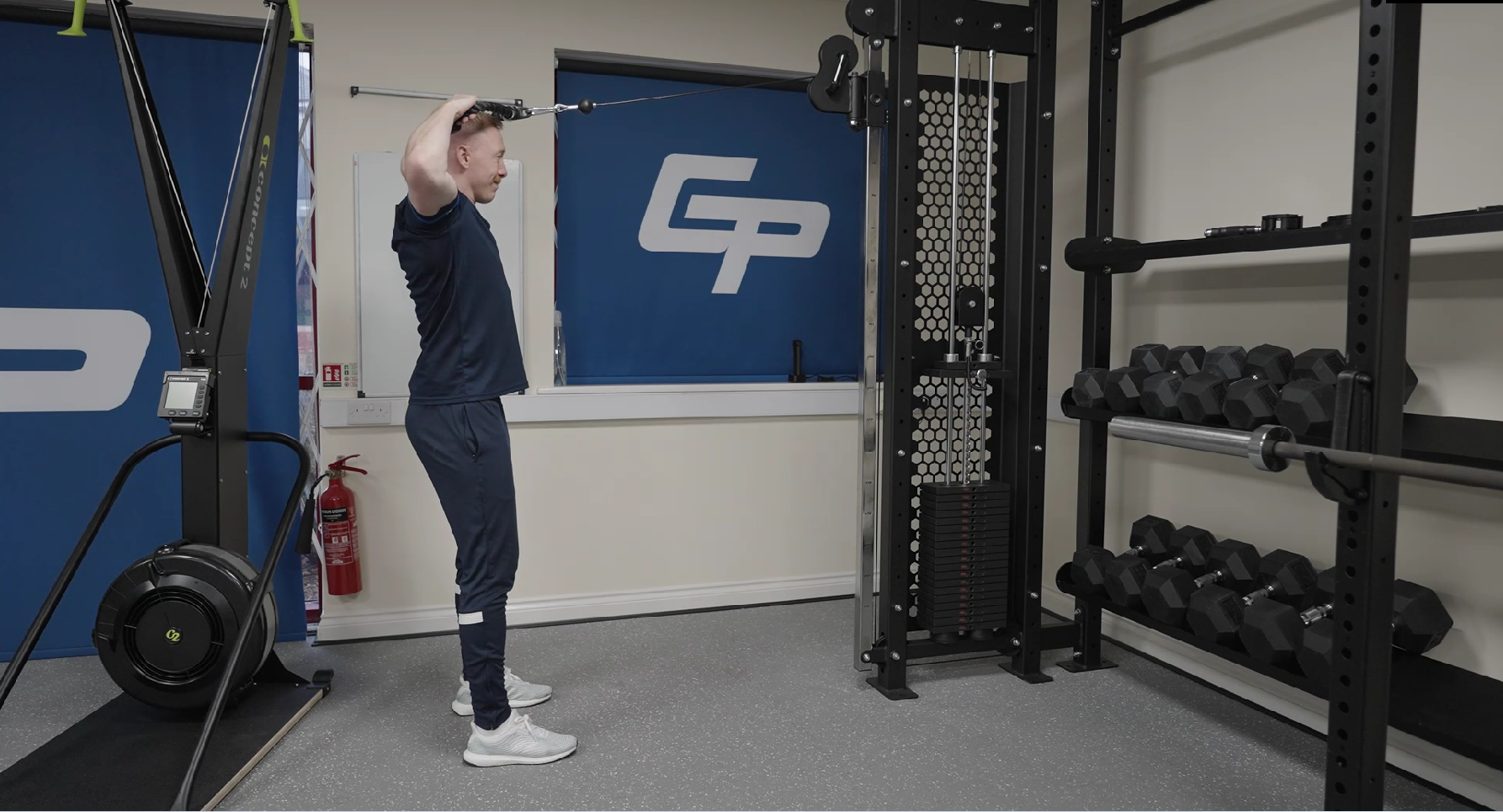
Sets: 2 - 4 Reps: 10 - 12
Instructions:
1. Set up the cable machine at the gym so it has the rope attachment at a height in line with your head. Start in a standing position facing the cable machine.
2. Grab the outside of the rope attachment with each hand.
3. Start the movement by pulling the rope towards your forehead, making sure you squeeze your back with each repetition.
4. Return to the starting position and repeat for the designated number of reps.
Lateral raise
A classic accessory exercise – one that supports smaller muscles to improve overall strength – the lateral raise mainly focuses on muscle growth of the anterior (front) and medial (side) deltoids. Form is important, so focus on control and don’t cheat by shrugging or swaying to ensure you are hitting the muscle intended.
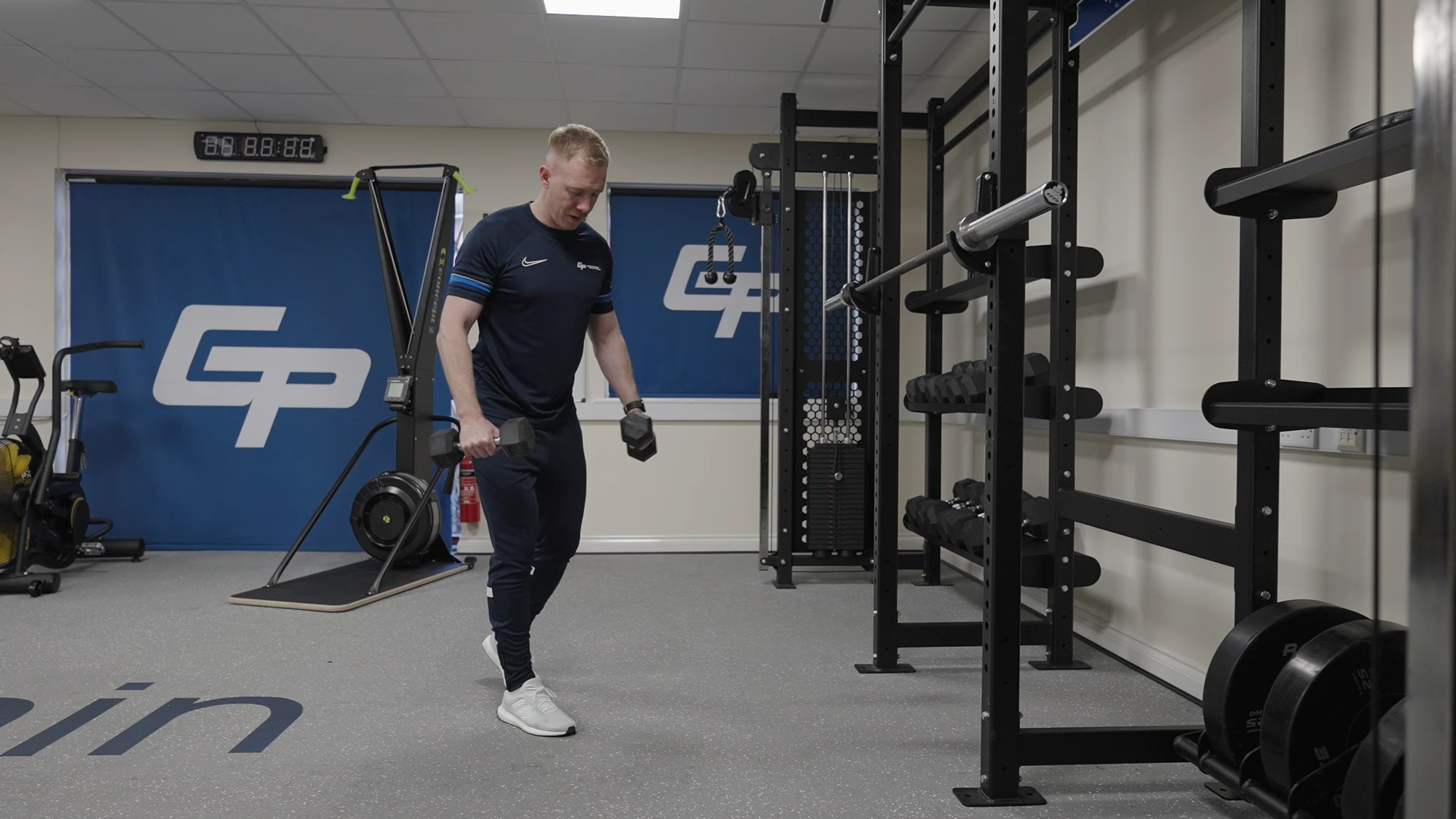
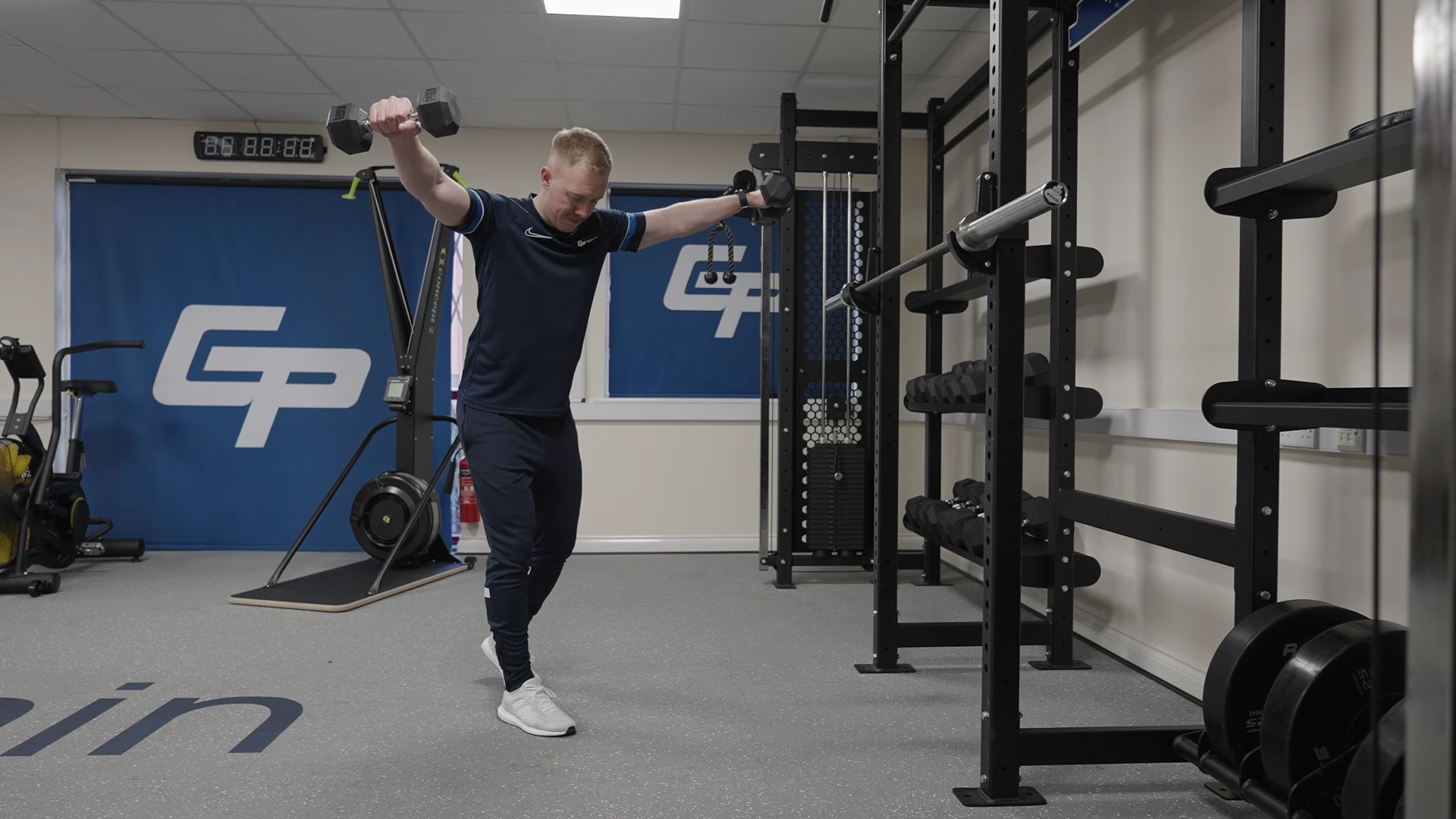
Sets: 2 - 4 Reps: 10 - 12
Instructions:
1. Start in a slight split stance with a dumbbell in each hand on either side of you.
2. Breath in and raise the dumbbells until they are shoulder height, slightly in front of the body to hit anterior and medial deltoids.
3. Pause for a second at the top before a controlled eccentric (downwards motion) back down.
4. Return to the starting position and repeat.
Z press
You will be sitting down while performing the Z Press, making your core do all the heavy lifting. Posture is key, so chest up, back straight and legs need to be fully extended. A great exercise to reinforce stability and strength while understanding proper scapula (shoulder blade) control and tension, especially in the eccentric (downwards motion) of the lift.
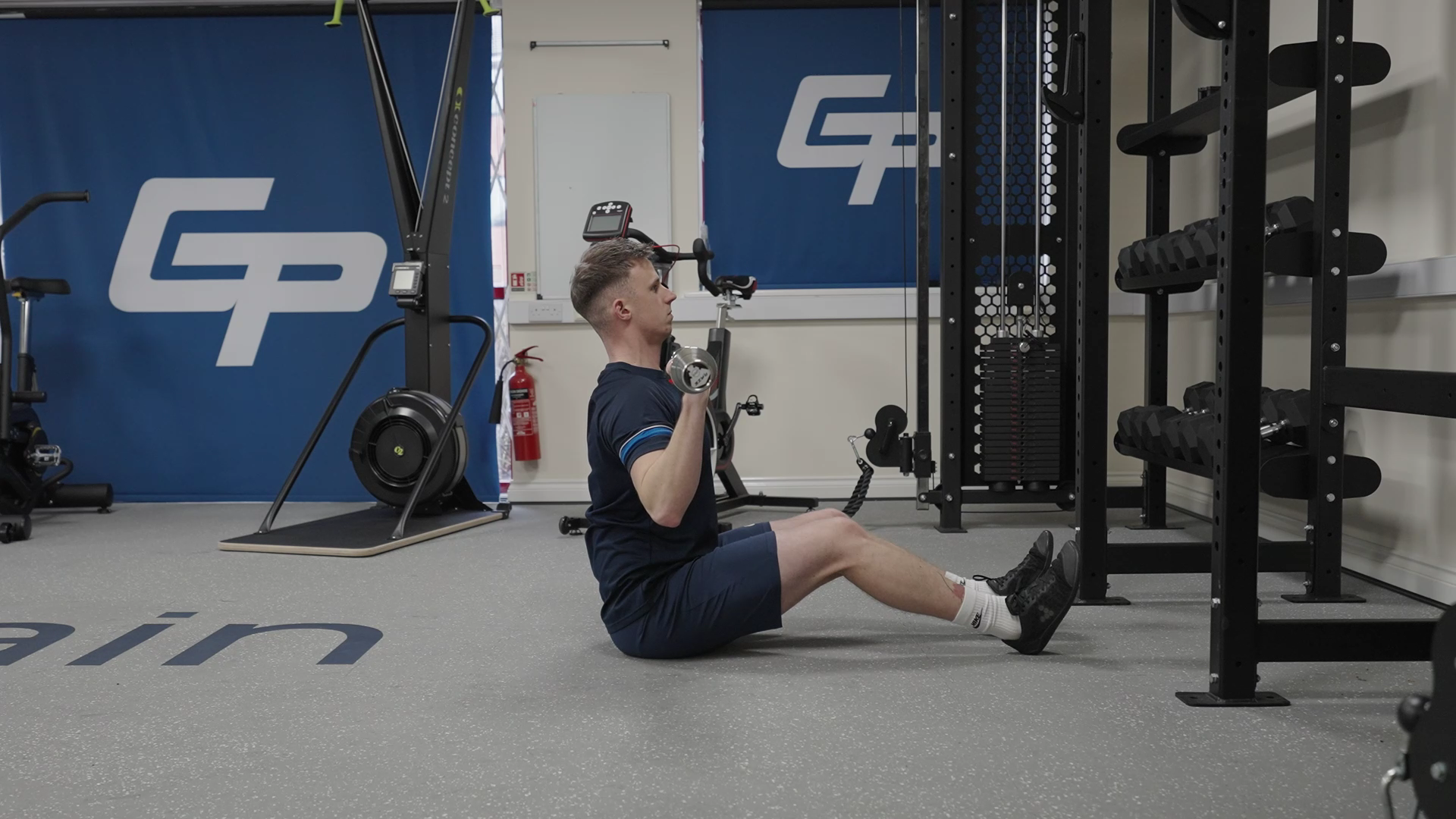
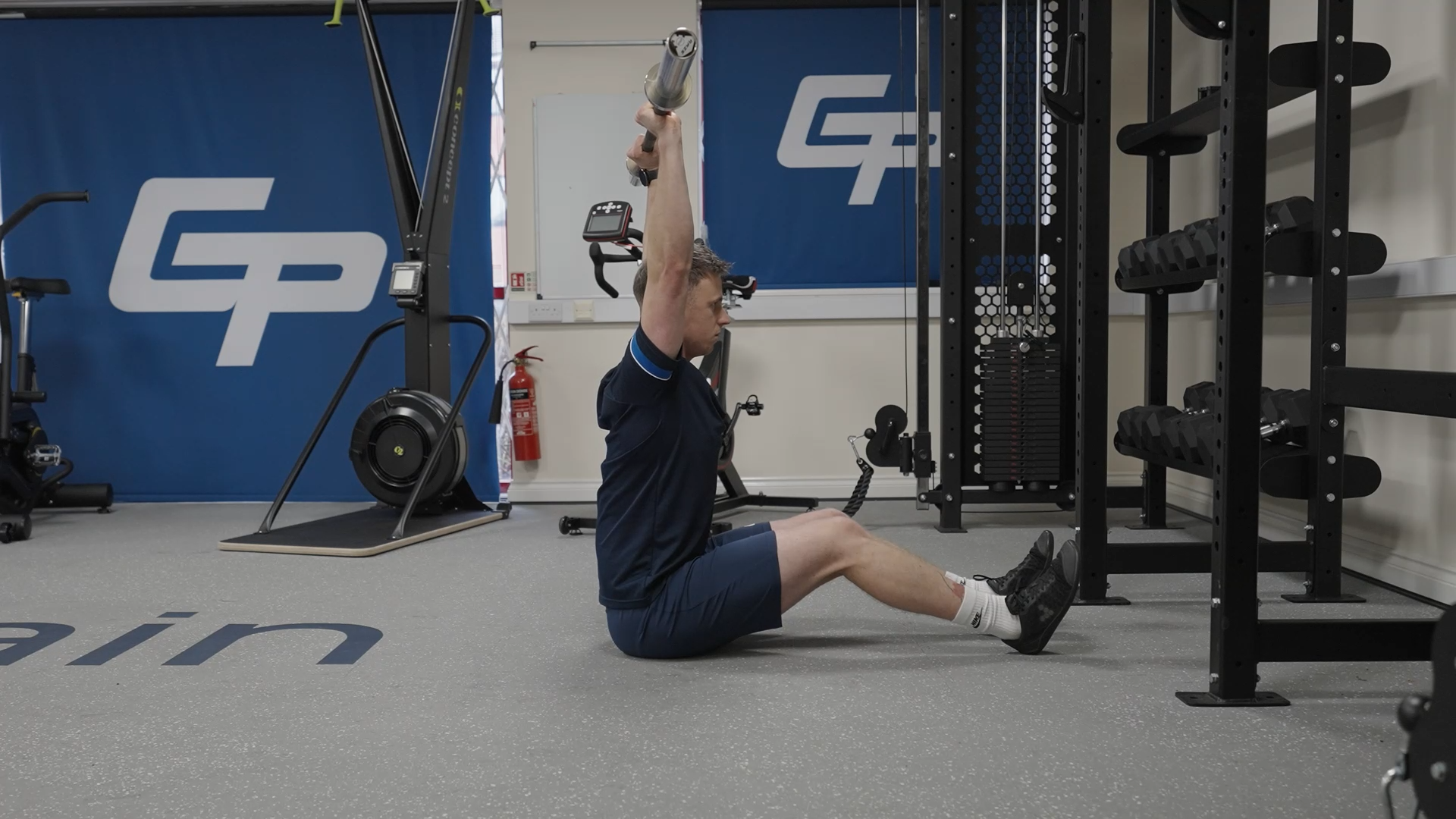
Sets: 2 - 4 Reps: 10 - 12
Instructions:
1. Start the movement by sitting down with your legs out long in front of your body. Keep your legs slightly bent if needed.
2. Keeping your core engaged, push the dumbbells so that they are shoulder height just outside of the shoulders with palms facing 45 degrees.
3. After taking a deep breath, exhale and press the dumbbells directly overhead so that your wrists stop directly over your shoulders.
4. Reverse the movement and follow the same path to return back to your starting position.
Waiter walk
An exercise that is rarely seen in commercial gyms, but ideal to nail shoulder stability and ensure control is kept throughout the body while in locomotion. If the core is not braced here, load will be limited and the torso will lean to the side, so you will want to keep a straight line from foot to hand.
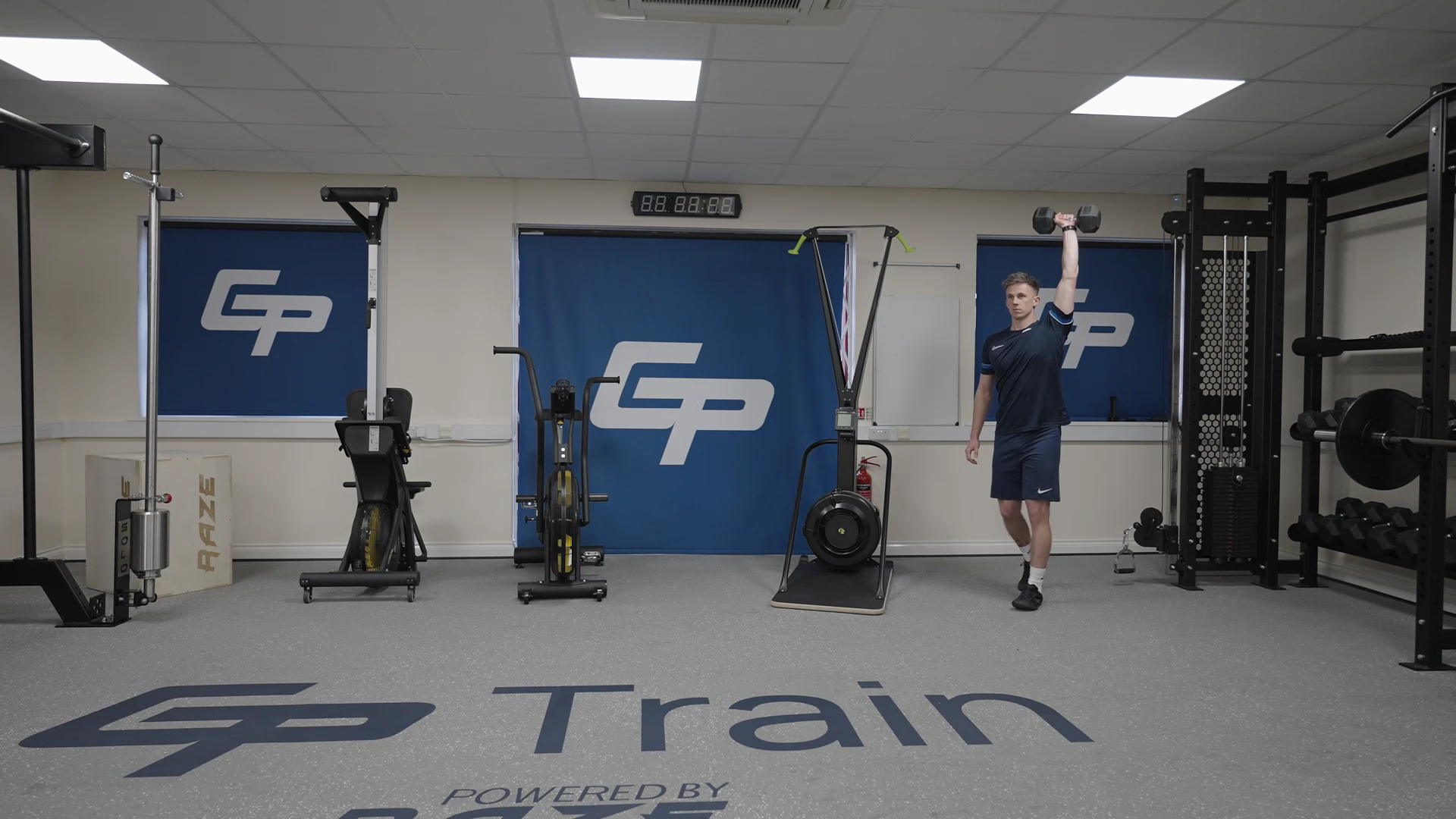
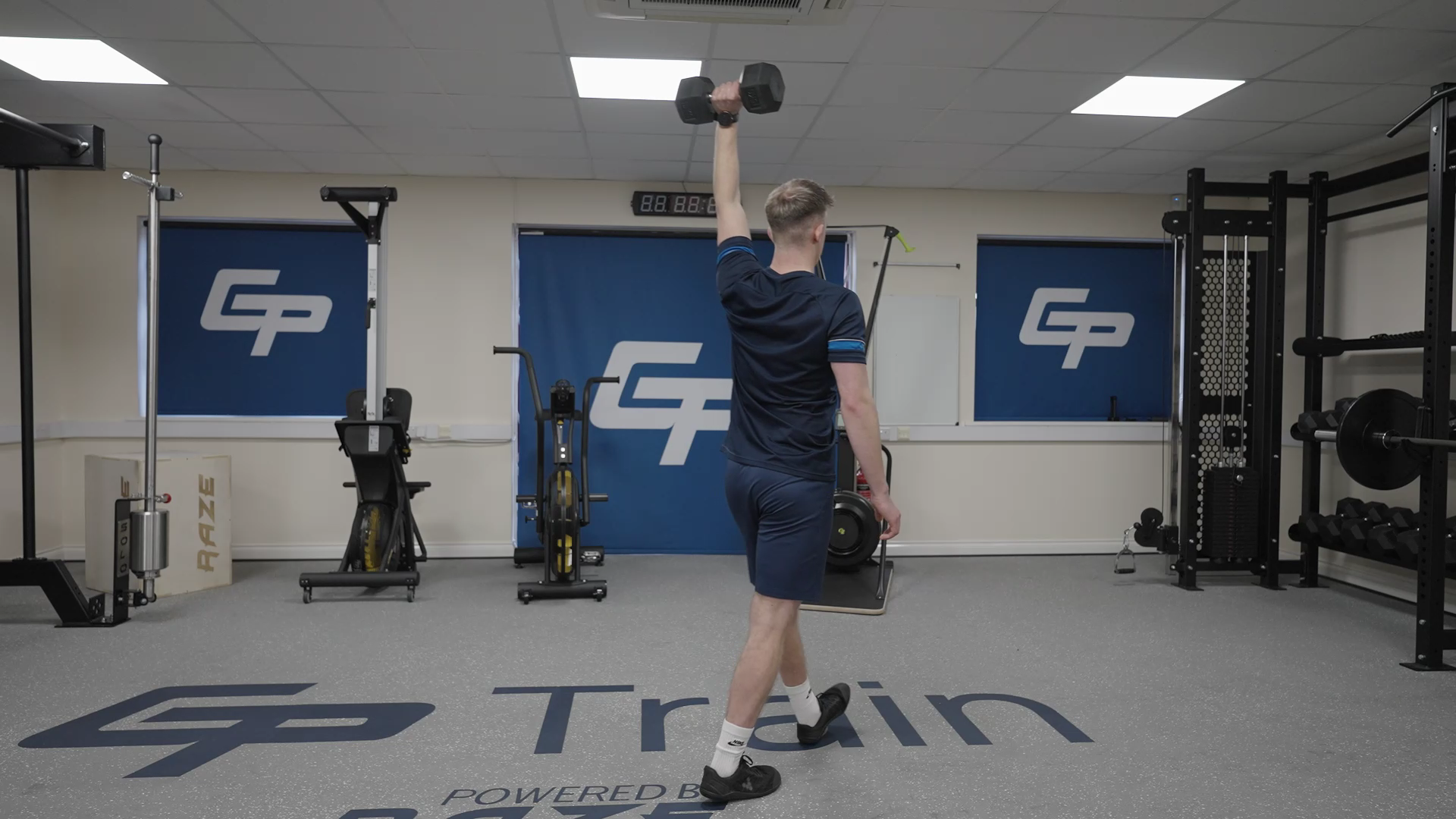
Sets: 2 - 4 Reps: 10 - 12
Instructions:
1. Start the movement standing with a dumbbell in one hand, and your feet shoulder-width apart.
2. Keeping your knees soft and core engaged; push the dumbbell so that it is shoulder height just outside of the shoulder.
3. Ensure the scapula (shoulder blade) is set low and the trapezius (large back muscles) are not raising the shoulder up to the ear.
4. After taking a deep breath, exhale and press the dumbbell directly overhead so that your wrists stop directly over your shoulder.
5. Making sure your body remains upright and core kept tight, walk with the dumbbell for the designated distance.
6. Switch hands and perform on the other side.
Scots press
This is a different approach to shoulder training, and it’s an amazing strength and mobility exercise favored by weightlifters, CrossFit athletes and Olympic lifters. If you have limited range in your thoracic spine (upper back) or weakness, then this exercise will highlight this.
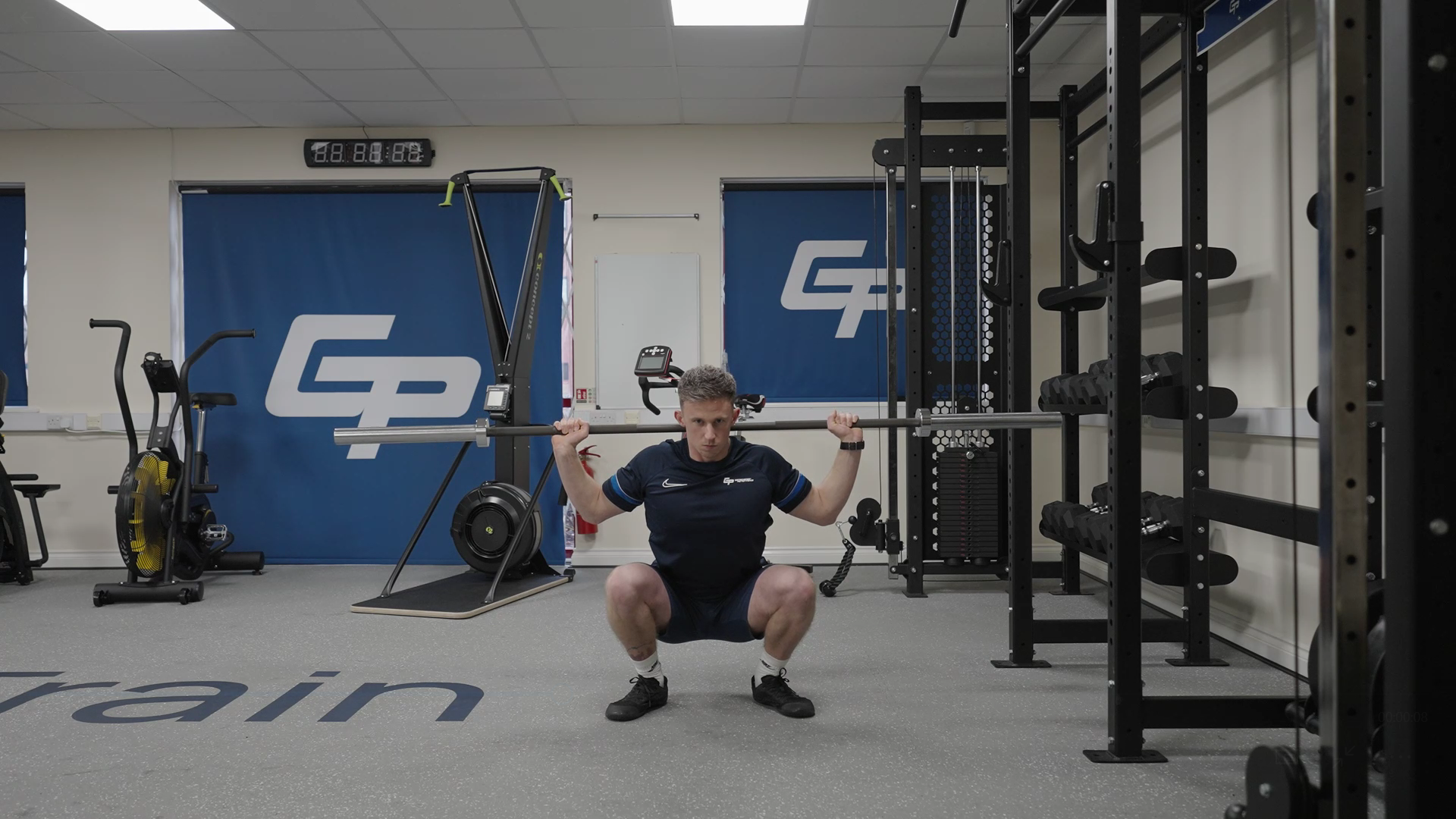
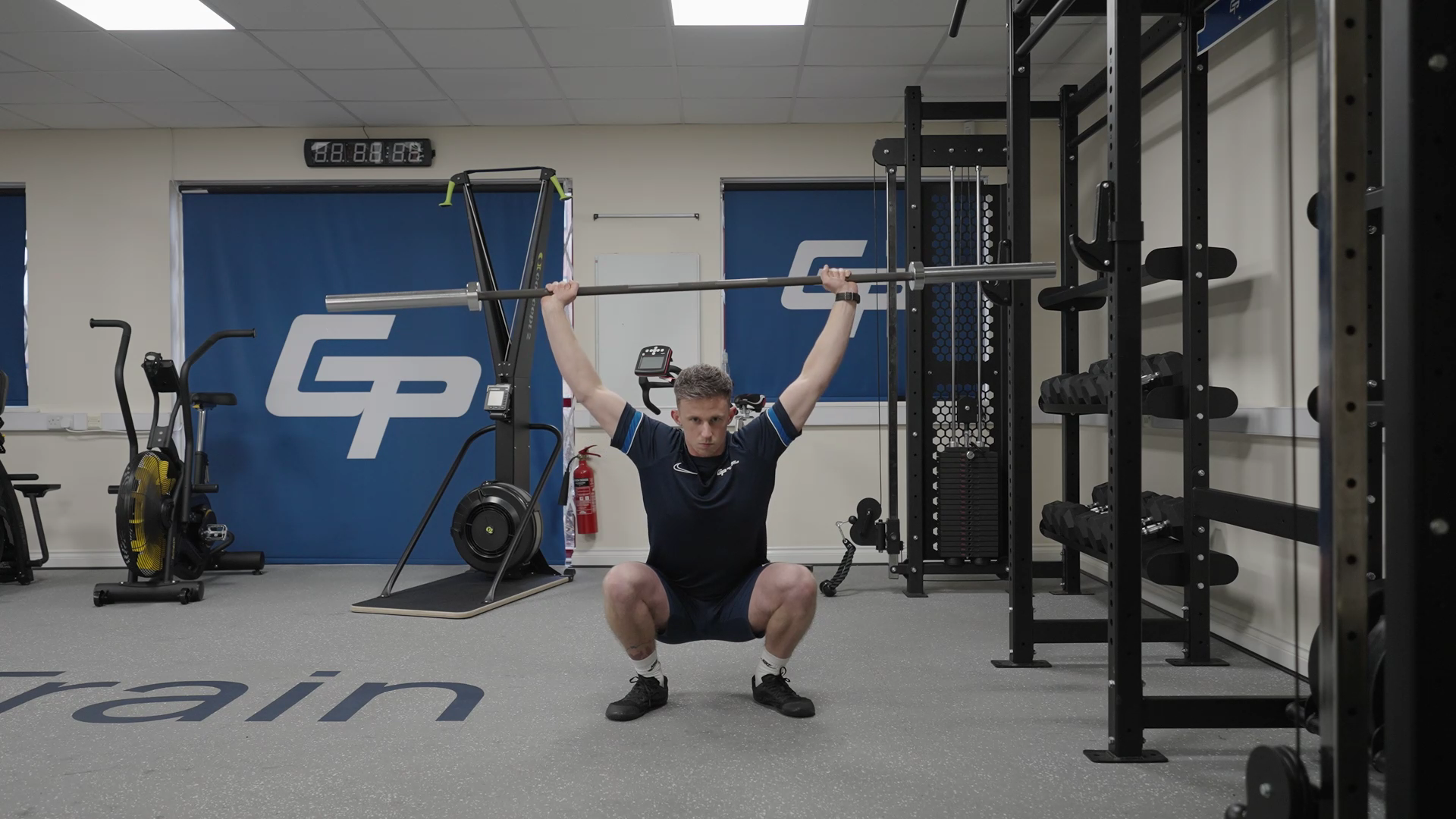
Sets: 2 - 4 Reps: 10 - 12
Instructions:
1. Start the movement with a barbell placed on your upper back, in a classic back squat position.
2. Sit back into a low squat position pushing through your heels.
3. Take a deep breath in and press the barbell directly overhead so your arms are fully extended and wrists are just wider than your shoulders.
4. Reverse the movement and follow the same path to return the bar back to the low squat position.
Why is shoulder strength important?
“Shoulder muscles are necessary for everyday activities such as lifting and carrying," says Carlos Cobiella, consultant orthopaedic surgeon at the Institute of Sport, Exercise & Health.
"Keeping the shoulder and upper back muscles in good shape makes everyday tasks easier and also improves posture, preventing muscle strains around the neck, upper back and shoulders."
“As the body gets older, ensuring it has the power to meet the demands of everyday life is important,” adds Raynsford. “Therefore, weight training for the shoulders, and strength training in general, should be a focus for all.”
Sign up for the Live Science daily newsletter now
Get the world’s most fascinating discoveries delivered straight to your inbox.

Maddy Biddulph is a freelance health and fitness journalist with over 26 years of experience working for consumer media in the US and UK. As a Level 3 personal trainer and weight loss advisor she is used to trying out and reviewing the latest health and fitness products. At Maddy Biddulph Personal Training, she runs one-to-one and small group sessions, as well as group exercise classes. She specializes in mobility work with seniors and runs regular chair workouts in her hometown of Oxford.










